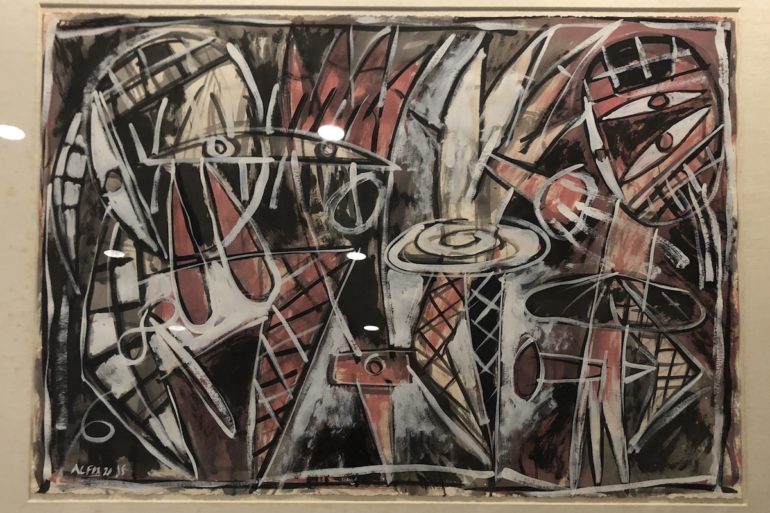
This post is also available in:

Monday’s radio frequencies Mixtape were directed for the second appointment by dr. Tomás Guilarte and his vision of how the brain works as a work of art.
Scientist, educator and respected academic leader, Tomás Guilarte is the dean of the Robert Stempel College of Public Health & Social Work of FIU -Florida International University-. After spending three decades as a professor and researcher in the Department of Environmental Health Sciences at the Johns Hopkins University Bloomberg School of Public Health, he received the prestigious Distinguished Toxicologist Award from the Hispanic Organization of Toxicologists (HOT) in 2016.
Specifically, Guilarte’s research explores the impact of environmental pollutants on neurological and mental diseases. His name is best known for revealing the effects of low-level lead exposure on the central nervous system during brain development, a discovery that led to the development of strategies to mitigate learning deficits.
During his speech, Dott.Guilarte presented enlargements of images of synaptic activities, and their transmission mechanisms that seem very similar to abstract artistic paintings. He showed, through sections of synaptic activity in so-called healthy brains and brains potentially damaged due to inflammation or hits (the case for football players) how much the activity of exchange of electric currents from one cell to another is fundamental and It is important to offer stimuli through art, physical and mental exercise to keep the brain active, which in this way, through the synapses, is able to reproduce the damaged cells while remaining young.

But what does the work of a luminary in neurology have to do with the work of art by Carlos Alfonzo, owned by the Patricia and Phillip Frost Art Museum, presented tonight? Apparently it seems to have nothing to do except in all the works, including this “Untitled” of 1989, Carlos Alfonzo uses as a recurring image the head, full of not only mere material meanings, and tears.
A key figure in the development of expressionist painting in the 80s, Carlos Alfonzo was born in Cuba in 1950 and was a very prolific artist, ranging from drawing to painting, from sculpture to ceramics and murals. Many of his works contain subtle clues that evoke his homosexuality and the fear and anger generated by the AIDS epidemic. This illness took him away at the age of 41, just two months after the 1991 Biennial for which he had been selected by the Whitney Museum of Art in New York as the best representative of contemporary art.
After graduating in art from the Accademia di Sant’Alejandro and a second degree in art history at the University of Havana, the far from idyllic conditions of Cuba led to internal contrasts so strong as to induce more than 10,000 Cubans, among which Alfonzo to seek political asylum at the Peruvian embassy. This event led the Cuban government to call an exodus with the approval of Fidel Castro: in 1980, 125,000 Cubans left the island from the port of Mariel bound for Miami and then acquired the name of Marielitos.
Following his departure from Cuba, the name of Carlos Alfonzo was removed from the list of Cuban artists and his art, which he continued to produce on American soil, begins to become testimony of an individual tormented in a perennial search for reconciliation between the past and the future that will be more than ever short for him.
The painting rich in lines, colors and strong black outlines of Alfonzo has implications with the Cubist art of Picasso and the biomorphic Expressionism of Matisse and is full of meanings that refer to the Castro regime, the Cuban Santeria, the medieval Catholic mysticism and the tarot from which it is inspired to build a system of symbols floating in huge bubbles similar to tears: large tears, clear and transparent, inside which you can glimpse tongues and daggers that are symbolic images that represent the belief that AIDS was a disease linked to homosexuality and sent with the evil eye through the tears of insects.
In Alfonzo’s painting the central theme is his dialogue with death to which the odyssey of contemporary existence alternates: his divided identity, solitude, misunderstanding and sickness.
Feelings and pains that elaborate as well as in tears even in the representation of heads: Heads cut off, expression of the inner world of Alfonzo poised between the past and the present; solitary heads that refer to Eleguá, one of the main deities of the Santeria: Deity of travel (his journey from Cuba to Miami) master of the intersections and choices of life and guardian of the gates. Eleguá is the personification of risk and death and is represented as a small concrete head that, loaded in the appropriate manner by the priests, is placed behind the doors of the house to defend the hearth and the person.
The works of Carlos Alfonzo, today, have received more than ever the attention that he should have received back then in Cuba, despite the political choices made. He had the ability to attract viewers into his world and inspire them to rediscover their common humanity. Few artists have explored the theme of AIDS with the passion and spiritual immediacy of Alfonzo, and today his works are collected in important galleries and thematic exhibitions, such as that of the iconic Art Against AIDS exhibition, presented to Frances Wolfson Art Gallery of Miami Dade College.
.
